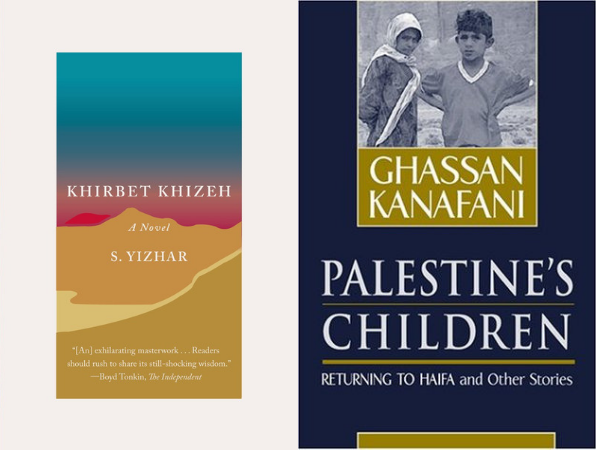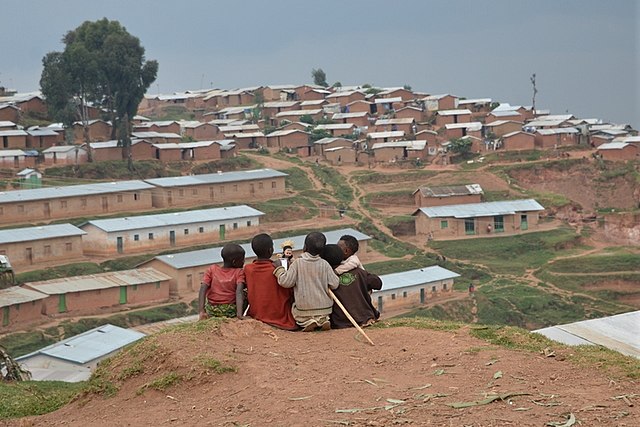Reading Lists
5 Book Pairings to Help You Understand Historical Conflicts
Moriel Rothman-Zecher, author of ‘Sadness is a White Bird,’ on fiction that illuminates the complexities of war

Power and powerlessness are key elements of conflict — elements that, in some cases, render the word “conflict,” in its two-sidedness, something of a misnomer. On the political level, one cannot talk about “conflicts” like the Israeli occupation of the Palestinian Territories or the US occupation of Vietnam without grappling with radically imbalanced realities of power and powerlessness. The word “complexity,” if mis-wielded, can deflect attention away from such power imbalances.
That said, “power” and “powerlessness” are not synonymous with “evil” and “good,” as certain simplistic strains of political discourse come close to claiming. The brilliance — the relief — of reading novels and short stories is that worthwhile fiction is not that interested in fairytale categories of good and evil, at least when it comes to characters: fiction is interested in that which is human. And that which is human is always complex.
The lives of the characters in my new book, Sadness is a White Bird, are framed by the Israeli-Palestinian conflict. Jonathan, a young Jewish Israeli, is excitedly preparing to enlist in the Israeli army, but when he meets and befriends Palestinian siblings Nimreen and Laith, the clarity he once felt about his future choices begins to crumble. Political context and history weigh heavily on all three characters as they seek to form relationships across “opposite” sides of the same conflict.
What follows here is a list of pairings, some books and short stories, that deal with the complexities of various conflicts. I chose the pairs not in order to draw a false parallel of power, but rather with an eye past the realities of power and powerlessness that form the palpable background of each novel or story. Through each of these ten works of fiction pulses devastation, beauty, humanity, and suffering.

The Israeli-Palestinian Conflict
Khirbet Khizeh by S. Yizhar and Returning to Haifa by Ghassan Kanafani
These two novellas were written respectively by an Israeli combat soldier who later became a Member of Knesset, and a Palestinian spokesman for the Popular Front for the Liberation of Palestine who was eventually assassinated by Israeli forces. Each was published directly after a major violent milestone in Israeli-Palestinian history. Khirbet Khizeh was published shortly after the events of 1948, known by most Israeli Jews as Milhemet HaAtzmaut (the War of Independence), and by most Palestinians as the Nakba (the Catastrophe). Returning to Haifa was published shortly after 1967, known by most Palestinians as the Naksa (the Setback), and by most Israeli Jews as Milhemet Sheshet HaYamim (the Six Day War).
Both books deal directly with the political realities of their times. Khirbet Khizeh is told from the perspective of a nameless, tormented narrator, and is the story of an Israeli combat unit’s mission to expel Palestinian civilians from the fictionalized village of Khirbet Khizeh during the 1948 War of Independence. Returning to Haifa follows Said and Safeyya, Palestinian refugees who fled Haifa during the 1948 Nakba (losing their infant son in the process), and return to the same city after Israel wins the 1967 war, occupies the West Bank and permits those Palestinians newly placed under Israeli rule to “visit.” Each novella is gripping, disturbing, enraging, torturous — and deeply humane. Though both deal directly with politics, and both writers were deeply political in their lives and careers, neither book is a simplistic polemic: there are no caricatures in either work, no goblins — just people, and violence, and pain.

The Vietnam War/The American War
The Sympathizer by Viet Thanh Nguyen and The Things They Carried by Tim O’Brien
In the Pulitzer Prize-winning novel, The Sympathizer, Viet Thanh Nguyen’s acerbic narrator muses, in reference to a thinly-fictionalized version of Apocalypse Now: “Movies were America’s way of softening up the rest of the world, Hollywood relentlessly assaulting the mental defenses of audiences with the hit, the smash, the spectacle, the blockbuster, and, yes, even the box office bomb. It mattered not what story these audiences watched. The point was that it was the American story they watched and loved …’’ The narrator goes on to explain how it doesn’t make much of a difference if it the American soldiers portrayed are gentle or cruel, if they feel bad for the Vietnamese they are killing or remain wholly indifferent to their deaths: because either way, the Vietnamese are merely supporting characters — or, more often, extras — in America’s story of “the Vietnam War.” The Sympathizer is a brilliant book for many of reasons: it is funny, gripping, distressing, sharp, delightfully strange (the narrator manages to turn even an episode of onanism via dead squid into an opportunity for biting commentary on the hypocrisies of a culture that normalizes and glorifies war while proclaiming puritanism in regard to masturbation). And it is a different sort of American story — a Vietnamese-American story — about “The American War” than the stories most Americans are told by Hollywood. And by novels.
Reading The Sympathizer, I found myself thinking back on one of my favorite books in high school, which I’ve since reread twice: The Things They Carried, by Tim O’Brien. It is a gorgeously written book, and the chapter titled “How To Tell A True War Story” remains one of my favorite meditations on the meanings of truth and fiction (or: truth in fiction). But in thinking back on this richly detailed, deeply empathic novel, I have trouble remembering if there were any Vietnamese characters in the book at all. In fact, the American soldiers’ act of killing that I remember most vividly is the episode in which the narrator’s comrades torture and kill a baby water buffalo (and ultimately throw it down a well, poisoning the water for nameless, faceless Vietnamese villagers). I do not note this absence, necessarily, as a critique of The Things They Carried. Perhaps even the opposite: There is a disturbing honesty, I think, in the way in which the Vietnamese are rendered to the American soldier-narrator’s eye: largely invisible — sometimes threatening, sometimes pitiable, never the center or the main point of this story. And this story, of young American soldiers in Vietnam, of their friendship, of their loss, of their fear, of their savageness, of their decency, is a story that needs to be told and read, and The Things They Carried is a book that tells that story movingly, circuitously, powerfully. The story of almost-children being made to kill and maybe die for the sake of some psychopathological ideology or fatuous policy-goal is a major story of our world. It’s just not the only story.

Children in War
The Stilt Fishermen of Kathaluwa by Maxine Beneba Clarke and Dogs at the Perimeter by Madeleine Thien
Almost-children being made to kill is one story of conflict in our world. Actual children being made to kill is another one. In The Stilt Fisherman of Kathaluwa, from the hard-hitting, stunning collection entitled Foreign Soil, Maxine Beneba Clarke tells the story of one child refugee who was forced to do horrific things to other children in the context of the conflict in his home country of Sri Lanka. “The ocean hums like a snoring monster,” the story begins: a strange, wonderful description that immediately conjures that world of imagination and terror that children everywhere have to navigate; soon, though, it becomes clear that the real-life terrors little Asanka has been through are far more horrific than nightmares about monsters. As the story progresses, we slowly discover more details of Asanka’s past a child-soldier for the Tamil Tigers, both the violence inflicted upon him and the violence he was forced to inflict upon others. His story is told in parallel with that of Loretta, an Australian lawyer who volunteers at the Asylum Seekers Centre, where Asanka is being held after arriving by boat. This telling of all three stories, interwoven — Asanka’s past, Asanka’s present, Loretta’s encounter with Asanka — forces the reader to keep looking, rather than turn away or fall back on self-protecting, distancing mechanisms (“That sort of thing happens way over there, far away from me, from my life”). There is little in the way of zoomed-out judgement in this story, and an immense amount of suffering palpitating in its pages.
This centering of a child’s narrative of incomprehensible violence is also part of Madeleine Thien’s breathtaking novel about the Cambodian genocide, Dogs at the Perimeter. In this story, the continuum of children being horrifically victimized and children being made to perpetrate horrors is fluid. Clarke’s short story focuses on the recent past of the main character, and on the effects it has on him shortly after; in Dogs at the Perimeter, we meet the narrator, Janie, decades after she survived the genocide in her native Cambodia. This novel’s explorations of memory, and of one adult’s efforts to explore the harrowing, terror-drenched corridors of her own past, are perhaps unparalleled in any other book I’ve read. Thien’s writing about one of the most atrocious genocides in modern history is stunning, and the book is both relentless and melodic, dealing with a story that is crushing almost to the point of unbearability, but with notes of beauty, of relief, even, threaded through the fabric of the life of its narrator.

The Iraq Wars
I’jaam: An Iraqi Rhapsody by Sinan Antoon and The Yellow Birds by Kevin Powers
Two other novels, I’jaam, by Sinan Antoon and The Yellow Birds, by Kevin Powers, deal startlingly and powerfully with questions of memory and state violence, each from very different positions in Iraq’s modern history. Antoon’s novel is set in mid-to-late 1980s Iraq, before the two “Iraq Wars,” as they are known here in American contexts, during the Iran-Iraq War, back when Saddam Hussein was a US ally, and its main character is a jailed Iraqi dissident. The language — and the focus on the nuances of the Arabic language — is beautiful and nauseating and claustrophobic, and the short novel is dizzying, poetic, and powerful. Powers’ novel is set during the early days of the “Second Iraq War,” and is told from the perspective of a traumatized American soldier, back at home in Virginia, attempting to grapple with some of the most horrific elements of his recent past.
Both novels contain vertiginous amounts and descriptions of violence, and both center around characters who dissent, in one way or another, from the political currents with which they are expected to flow. These two novels shed light on very different parts of modern Iraqi history, and the conflicts that have torn apart the country and devastated its residents (as well as those sent to carry out the violence there). Yet both are beautifully written books.

The Kaleidoscope of Conflict
The Ministry of Utmost Happiness by Arundhati Roy and Beirut ’75 by Ghada al-Samman
Both of these novels feel like they are about everything, in their respective conflict-contexts (India and Lebanon): History, gender, class, micro-interactions and macro-machinations, violence, friendship, loss. Both are kaleidoscopic stories centered around an array of masterfully crafted, flawed, human characters, seeking to live decently as staggering levels violence and misery ebb and swell around them, threatening to engulf everything.
The Ministry of Utmost Happiness delves into a number of conflicts, past and ongoing, in modern India, including a stunning, sprawling story of three interwoven characters and their interactions with each other and with the conflict in the Kashmir. Beirut ’75, written with dizzying prescience in 1974, delves into the lives of various people and peoples in Beirut, and the tensions boiling beneath the surfaces of the Lebanese capital; it’s set just before the start of the Lebanese Civil War that erupted in 1975, and lasted for (at least) a decade and a half.
Both of these books, through the depth of their characters and the apathy-shattering quality of their prose, were, to me, crucial reminders that there is no actual “There” and that there is no absolute “Other.” Conflict in Kashmir is only unrelated to my life to the extent I pretend it is; a person seeking meaning and safety in Beirut in the early 1970s is only foreign to me to the extent I delude myself that they are.









